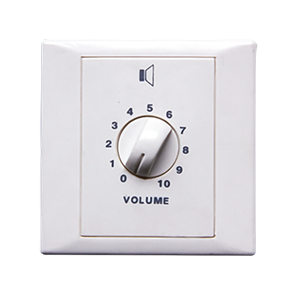Volume control holds significant importance in audio systems and electronic devices due to its multifaceted roles in user experience, environmental adaptation, and equipment management.
Firstly, volume control caters to individual preferences for sound levels, acknowledging the diversity in people's auditory sensitivities and tastes. Users have varying comfort levels regarding the intensity of sound, and volume adjustment allows them to tailor the audio output to their liking. This personalization enhances user satisfaction and engagement with the device or system.
Moreover, volume control facilitates adaptation to different environmental conditions. In quiet settings like libraries or bedrooms, lower volume levels are preferred to maintain a peaceful atmosphere and avoid disturbing others. Conversely, in noisy environments such as parties or outdoor gatherings, higher volume levels are necessary to overcome ambient noise and ensure clear audio transmission. By enabling users to adjust the volume according to their surroundings, volume control enhances the usability and effectiveness of audio systems in diverse contexts.
Volume control also plays a critical role in protecting users' hearing health. Prolonged exposure to loud sounds can lead to hearing damage or loss over time. By allowing users to regulate the intensity of sound output, volume control helps mitigate the risk of overexposure to loud noises, promoting safer listening practices and preserving auditory well-being.
Additionally, volume control facilitates dynamic range management, ensuring that both soft and loud sounds are audible and balanced. Different types of audio content exhibit varying levels of dynamic range, and volume adjustment enables users to maintain an optimal balance between the softest and loudest sounds, enhancing clarity and fidelity in audio reproduction.
Furthermore, volume control is essential for managing compatibility between different audio devices within a system. When connecting audio sources such as smartphones or MP3 players to external speakers or headphones, volume adjustment allows users to align the output levels to achieve optimal sound quality and prevent distortion. This compatibility management ensures seamless integration and consistent audio performance across various components of the system.
In communication devices, such as phones or intercom systems, volume control is crucial for maintaining clarity and intelligibility of voices. Users can adjust the volume to compensate for variations in speaking volume or background noise, ensuring effective communication in various situations.
Overall, volume control serves as a fundamental feature in audio systems and electronic devices, enhancing user experience, promoting environmental adaptability, safeguarding hearing health, managing dynamic range, ensuring compatibility, and facilitating effective communication. Its versatile functionalities contribute to the usability, versatility, and performance of audio technologies in diverse applications and settings.


